Mitsubishi ASX vs Suzuki S-Cross – Which one offers the better deal?
Compare performance, boot capacity, efficiency and price at a glance.
Find out which car is the better choice for you – Mitsubishi ASX or Suzuki S-Cross?
A Clash of Compact SUVs: Mitsubishi ASX vs. Suzuki S-Cross
In the ever-expanding world of compact SUVs, the Mitsubishi ASX and Suzuki S-Cross stand out as formidable contenders. Both models cater to drivers seeking performance, practicality, and modern technology, but they take different approaches to achieve that balance. Let's delve into the technical specifications, features, and innovations that define these two vehicles.
Engine Variants and Performance
The Mitsubishi ASX offers a variety of engine options for 2024, including petrol, petrol MHEV, and full hybrid variants. Notably, the power outputs range from 91 HP to a more robust 158 HP depending on the engine configuration. The ASX's torque figures reach a peak of 270 Nm, allowing for competitive acceleration, with some models achieving 0-100 km/h in as little as 8.5 seconds.
On the other hand, the Suzuki S-Cross also showcases a diverse range of engine choices, primarily focusing on full hybrid and petrol MHEV types. Its power output varies, topping at 129 HP with a torque of 235 Nm. The S-Cross is no slouch either, achieving 0-100 km/h in a respectable 9.5 seconds. While the ASX emphasizes higher horsepower, the S-Cross provides a more balanced torque delivery for city driving and highway performance.
Fuel Efficiency and Emissions
Fuel efficiency is a crucial consideration for buyers, and both vehicles offer commendable figures. The ASX has a consumption range of 4.7 to 6 L/100 km, depending on the engine and configuration. This impressive efficiency is matched with a CO2 emission class ranging from C to D, making it a responsible choice for eco-conscious drivers.
Meanwhile, the S-Cross shines with even lower consumption rates, hovering between 5.1 and 5.8 L/100 km. It boasts a slightly better CO2 emission output, ranging from 116 to 131 g/km, contributing to a more environmentally friendly footprint. Those who prioritize sustainability may find the S-Cross slightly more appealing in this area.
Dimensions and Practicality
When it comes to dimensions, the ASX measures 4239 mm in length, 1797 mm in width, and 1575 mm in height. This provides a spacious interior for passengers and cargo alike, including a trunk capacity of up to 484 liters. Its design strikes a balance between agility and roominess, ensuring a comfortable ride.
The Suzuki S-Cross, slightly larger at 4300 mm in length, 1785 mm in width, and 1580 mm in height, offers a trunk capacity of 430 liters. While the difference in cargo space is marginal, the added length can aid in cabin comfort, particularly for rear passengers. Both vehicles accommodate five passengers, making them suitable for family outings or weekend adventures.
Advanced Features and Technology
In terms of technology, the Mitsubishi ASX embraces modern innovations with features like a user-friendly infotainment system, advanced safety technologies, and available hybrid options. Mitsubishi focuses on enhancing driver comfort and connectivity with a range of tech-savvy features that include touchscreen displays and smartphone integration.
The Suzuki S-Cross counters this with its own set of innovations, particularly its all-wheel-drive variant that enhances performance in diverse driving conditions. The S-Cross incorporates various driver assistance systems to bolster safety, which reflects Suzuki's commitment to providing a reliable and secure driving experience.
Final Verdict: Which SUV Reigns Supreme?
Deciding between the Mitsubishi ASX and Suzuki S-Cross ultimately depends on individual preferences and needs. The ASX offers robust engine choices and slightly higher performance metrics, making it an excellent pick for those who value power. Alternatively, the S-Cross presents remarkable fuel efficiency and a wealth of hybrid options, appealing to eco-conscious consumers.
In the end, both compact SUVs deliver solid performance, practicality, and innovation, promising to cater to a wide array of drivers seeking their next adventure on the roads.
Here’s where it gets real: The technical differences in detail
Costs and Efficiency:
When it comes to price and running costs, the biggest differences usually appear. This is often where you see which car fits your budget better in the long run.
Mitsubishi ASX has a slight advantage in terms of price – it starts at 20600 £, while the Suzuki S-Cross costs 21800 £. That’s a price difference of around 1200 £.
Fuel consumption also shows a difference: Mitsubishi ASX manages with 4.40 L and is therefore noticeable more efficient than the Suzuki S-Cross with 5.30 L. The difference is about 0.90 L per 100 km.
Engine and Performance:
Under the bonnet, it becomes clear which model is tuned for sportiness and which one takes the lead when you hit the accelerator.
When it comes to engine power, the Mitsubishi ASX has a distinct edge – offering 158 HP compared to 110 HP. That’s roughly 48 HP more horsepower.
In terms of top speed, the Suzuki S-Cross performs minimal better – reaching 185 km/h, while the Mitsubishi ASX tops out at 180 km/h. The difference is around 5 km/h.
There’s also a difference in torque: Mitsubishi ASX pulls somewhat stronger with 270 Nm compared to 235 Nm. That’s about 35 Nm difference.
Space and Everyday Use:
Whether family car or daily driver – which one offers more room, flexibility and comfort?
Both vehicles offer seating for 5 people.
In curb weight, Suzuki S-Cross is barely noticeable lighter – 1280 kg compared to 1296 kg. The difference is around 16 kg.
In terms of boot space, the Mitsubishi ASX offers slightly more room – 484 L compared to 430 L. That’s a difference of about 54 L.
In maximum load capacity, the Mitsubishi ASX performs distinct better – up to 1596 L, which is about 366 L more than the Suzuki S-Cross.
When it comes to payload, Mitsubishi ASX hardly perceptible takes the win – 449 kg compared to 405 kg. That’s a difference of about 44 kg.
Who wins the race?
The Mitsubishi ASX proves to be is largely superior and therefore becomes our DriveDuel Champion!
Mitsubishi ASX is the better all-rounder in this comparison.
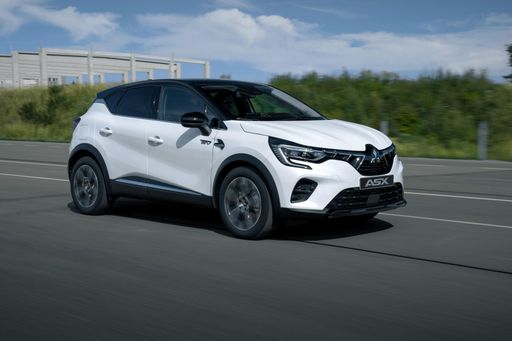 @ Mitsubishi Motors Corporation
@ Mitsubishi Motors Corporation
Mitsubishi ASX
Mitsubishi ASX
The Mitsubishi ASX is a compact crossover that mixes practicality with a no-nonsense personality, making it an easy choice for buyers who want sensible space without the showroom theatrics. It won't set your pulse racing, but its composed ride and user-friendly kit make it a dependable companion for daily errands and weekend escapes — reliable rather than flashy.
details @ Mitsubishi Motors Corporation
@ Mitsubishi Motors Corporation
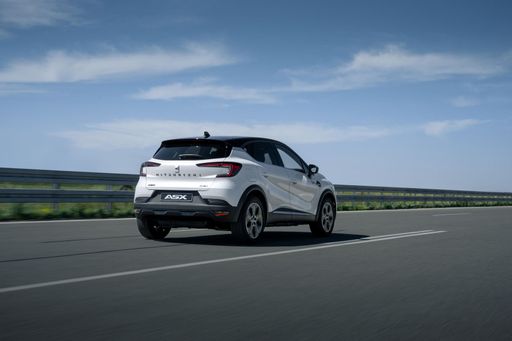 @ Mitsubishi Motors Corporation
@ Mitsubishi Motors Corporation
 @ Mitsubishi Motors Corporation
@ Mitsubishi Motors Corporation
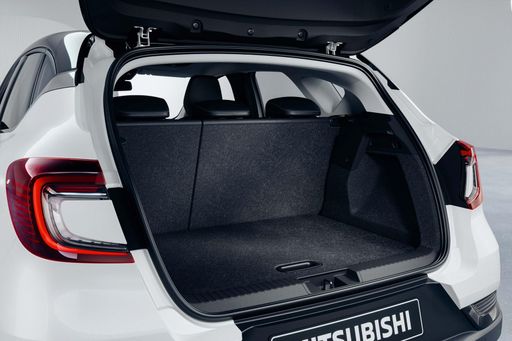 @ Mitsubishi Motors Corporation
@ Mitsubishi Motors Corporation
Suzuki S-Cross
The Suzuki S-Cross is a neatly packaged crossover that puts everyday practicality ahead of showy theatrics, offering a comfortable cabin and predictable handling that suit family life and weekend errands alike. It’s not a headline-grabber, but its sensible packaging, low-key charm and reputation for reliability make it a shrewd choice for buyers who prefer smart value over flash.
details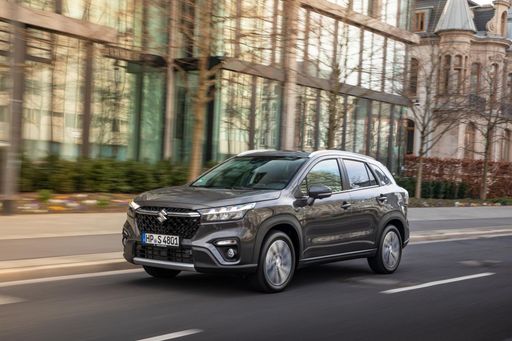 @ Suzuki Motor Corporation
@ Suzuki Motor Corporation
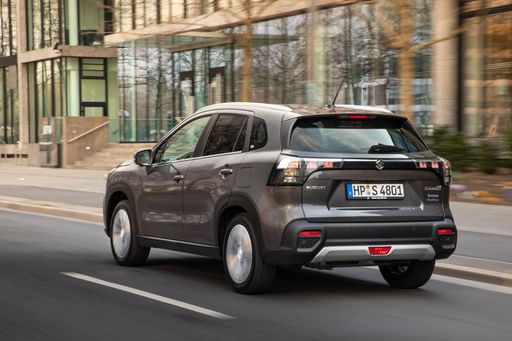 @ Suzuki Motor Corporation
@ Suzuki Motor Corporation
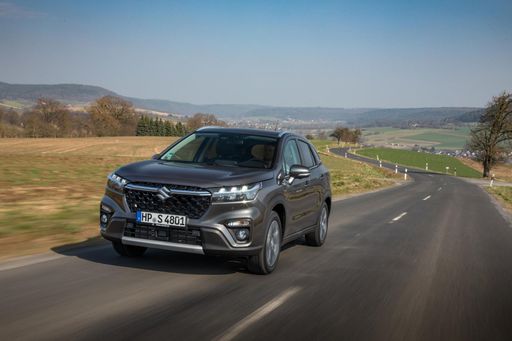 @ Suzuki Motor Corporation
@ Suzuki Motor Corporation
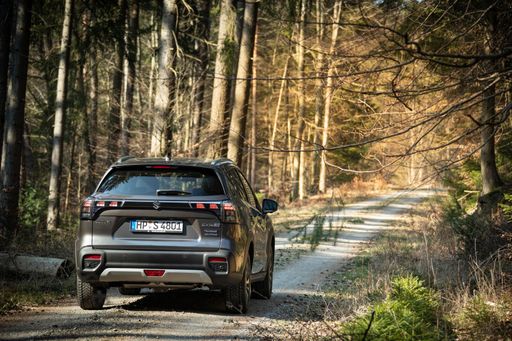 @ Suzuki Motor Corporation
@ Suzuki Motor Corporation
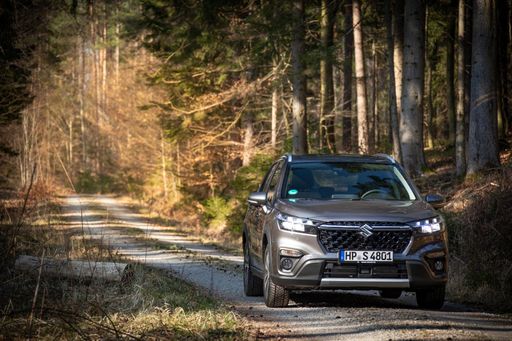 @ Suzuki Motor Corporation
@ Suzuki Motor Corporation
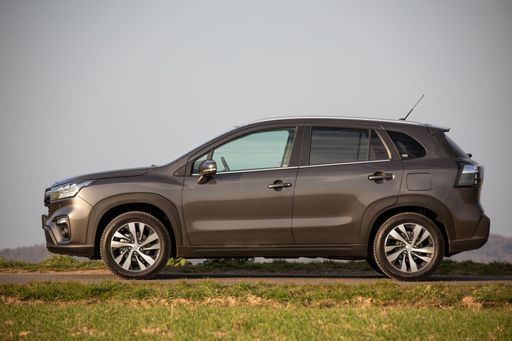 @ Suzuki Motor Corporation
@ Suzuki Motor Corporation
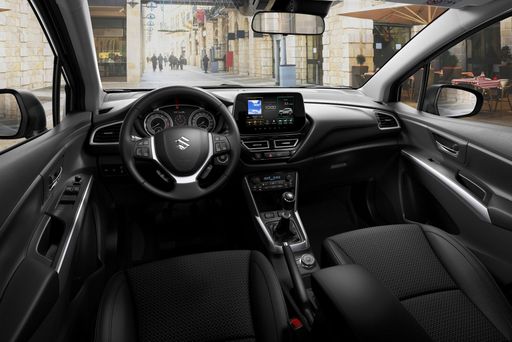 @ Suzuki Motor Corporation
@ Suzuki Motor Corporation
 @ Mitsubishi Motors Corporation
@ Mitsubishi Motors Corporation
|
 @ Suzuki Motor Corporation
@ Suzuki Motor Corporation
|
|
|
|
Costs and Consumption |
|
|---|---|
|
Price
20600 - 32500 £
|
Price
21800 - 34200 £
|
|
Consumption L/100km
4.4 - 6 L
|
Consumption L/100km
5.3 - 5.8 L
|
|
Consumption kWh/100km
-
|
Consumption kWh/100km
-
|
|
Electric Range
-
|
Electric Range
-
|
|
Battery Capacity
-
|
Battery Capacity
-
|
|
co2
99 - 135 g/km
|
co2
119 - 138 g/km
|
|
Fuel tank capacity
48 L
|
Fuel tank capacity
47 L
|
Dimensions and Body |
|
|---|---|
|
Body Type
SUV
|
Body Type
SUV
|
|
Seats
5
|
Seats
5
|
|
Doors
5
|
Doors
5
|
|
Curb weight
1296 - 1493 kg
|
Curb weight
1280 - 1385 kg
|
|
Trunk capacity
348 - 484 L
|
Trunk capacity
430 L
|
|
Length
4239 mm
|
Length
4305 mm
|
|
Width
1797 mm
|
Width
1785 mm
|
|
Height
1575 mm
|
Height
1580 mm
|
|
Max trunk capacity
1458 - 1596 L
|
Max trunk capacity
1230 L
|
|
Payload
397 - 449 kg
|
Payload
395 - 405 kg
|
Engine and Performance |
|
|---|---|
|
Engine Type
Petrol, Petrol MHEV, Full Hybrid
|
Engine Type
Petrol MHEV
|
|
Transmission
Manuel, Automatic
|
Transmission
Manuel, Automatic
|
|
Transmission Detail
Manual Gearbox, Dual-Clutch Automatic, Automatic Gearbox
|
Transmission Detail
Manual Gearbox, Automatic Gearbox
|
|
Drive Type
Front-Wheel Drive
|
Drive Type
Front-Wheel Drive, All-Wheel Drive
|
|
Power HP
91 - 158 HP
|
Power HP
110 HP
|
|
Acceleration 0-100km/h
8.5 - 14 s
|
Acceleration 0-100km/h
-
|
|
Max Speed
168 - 180 km/h
|
Max Speed
180 - 185 km/h
|
|
Torque
160 - 270 Nm
|
Torque
235 Nm
|
|
Number of Cylinders
3 - 4
|
Number of Cylinders
4
|
|
Power kW
67 - 116 kW
|
Power kW
81 kW
|
|
Engine capacity
999 - 1789 cm3
|
Engine capacity
1373 cm3
|
General |
|
|---|---|
|
Model Year
2024 - 2025
|
Model Year
2025
|
|
CO2 Efficiency Class
D, C
|
CO2 Efficiency Class
D, E
|
|
Brand
Mitsubishi
|
Brand
Suzuki
|
What drive types are available for the Mitsubishi ASX?
Available configurations include Front-Wheel Drive.
The prices and data displayed are estimates based on German list prices and may vary by country. This information is not legally binding.
